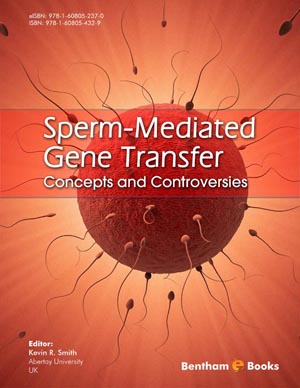Abstract
The importance of transgenic farm animals resides in their usefulness for very different objectives: for instance in human medicine (to obtain pharmaceutical products, organs for xenotransplantation, or as models for research in gene therapy ) or for agricultural applications such as improved output of the carcass or milk production and composition, increased growth rate, improved feed utilisation, enhanced reproductive performance, increased prolificacy, as well as to enhance disease resistance or reduce environmental impact. Pronuclear DNA microinjection has long been the most reliable method to produce transgenic animals. However, although transgenic animals have been generated using this approach, it has many limitations. Sperm Mediated Gene Transfer (SMGT) is based on the ability of sperm to bind, internalise, and transport exogenous DNA into an oocyte during fertilisation. In this chapter we review the state of art of SMGT in farm animals with a special emphasis on porcine and bovine animals, with additional information related to other ruminants and horses. We evaluate the possible applications of transgenic pigs and cattle and review the factors related to the success of SGMT in these species and offer our own experience based on studies analyzing the main factors in porcine and bovine SMGT.
Keywords: Transgenic Pig, Transgenic Cattle, Biomolecules production, Human diseases models, Xenotransplantation, Artificial insemination, In vitro fertilization, ICSI, Farm animals, Recombinase, Embryo transfer, Flow cytometry, DNA binding.






















